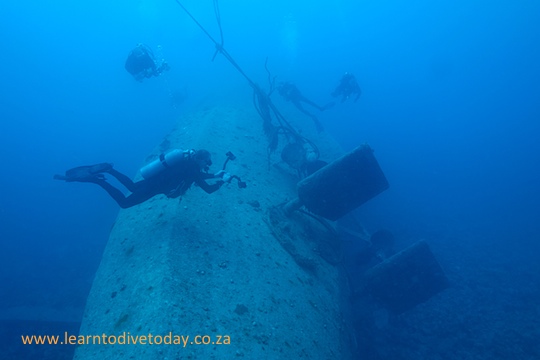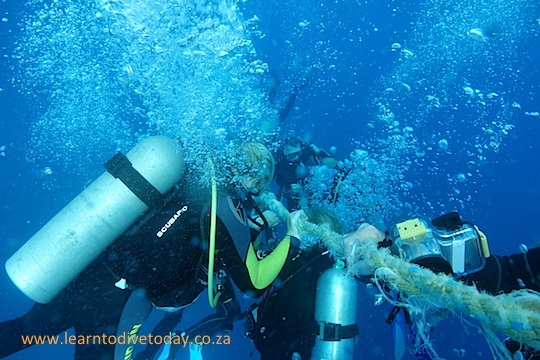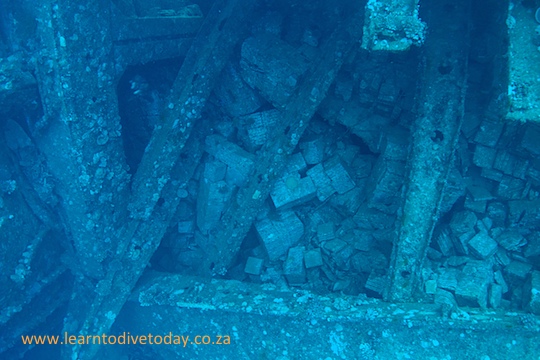You’re probably breathing a sigh of relief that we have come to the end of our celebration of scuba diving in the Red Sea. In case you missed anything, here’s the full suite of coverage that we provided for our October 2013 liveaboard trip.
Category: Red Sea
Northern Red Sea dive sites
We dived a variety of wrecks and reefs on our Red Sea trip, which followed the Northern Wrecks and Reefs itinerary offered by blue o two. Here’s a round up of the sites we visited:
- The Alternatives (videos)
- Bluff Point (videos):
- El Miniya (videos)
- Ras Muhammad National Park:
- Sha’ab Abu Nuhas (videos):
- Sha’ab El Erg:
- SS Thistlegorm (videos)
Here’s an amazing map showing a large number of the dive sites in the Red Sea and shared on Google maps by someone very kind and awesome. Click on the link at the bottom of the map (or here) to see it full size.
View Red Sea, Egypt in a larger map
Here’s a zoomed in version of the map, showing just the area we explored:
View Red Sea, Egypt in a larger map
Video footage of El Miniya (Red Sea)
The El Miniya is a minesweeper, sunk in 1970, lying close to Hurghada harbour. There’s no reef nearby so one’s view of the whole wreck is limited only by the visibility. Here are two short panoramas I filmed showing the wreck.
[youtube=”http://www.youtube.com/watch?v=BAxraJz1lvo&w=540″]
This one was filmed at her stern, where our liveaboard tied up to a line attached to one of her propeller axles:
[youtube=”http://www.youtube.com/watch?v=RyoOGhUiz8U&w=540″]
You can see another video that I filmed on our ascent from this wreck in this post.
Dive sites (Red Sea): El Miniya
The wreck of the Russian-built minesweeper El Miniya is only a few minutes from the entrance to the harbour at Hurghada, and we dived her on our very last day on the liveaboard. The minesweeper was delivered to the Egyptians in 1956, and she was sunk during the Six Day War in February 1970. There are some detailed technical specification of the vessel here. She was struck on her side by Israeli aircraft fire, turned turtle, and was hit on her underside as well before sinking.

Because of her proximity to civilisation (and a refuelling depot) and the absence of a nearby reef, the wreck isn’t particularly rich in marine life. The visibility is also less than it is elsewhere in the Red Sea (in Ras Mohammed, for example) but I found it quite adequate by Cape Town standards! She reminded me of the MV Katsu Maru in Hout Bay, Cape Town, because of the way she’s lying, resting on her port side.

SS Thistlegorm’s sinking was also an act of war, but it took place in 1941. It was interesting to dive a far more recent wreck, and one that is less exposed to swell and current than is the Thistlegorm. The starboard anchor is in place on the outside of the hull. The port anchor was deployed at the time of her sinking. You can also see what I think is a sonar device embedded in the hull of the vessel.

There are also torpedo-like objects visible where the superstructure lies on the seabed. These were towed behind the minesweeper to look for mines. You can see one in the image below, and a large winch which would have been used to manage the cable.

This is a deep wreck – I didn’t go down to the sand, but you can get at least 30 metres’ depth if you want it. This was the deepest dive I did on our Red Sea trip, and a nice way to round things off. Ascending and getting out of the water turned out to be quite adventurous…
Dive date: 24 October 2013
Air temperature: 27 degrees
Water temperature: 27 degrees
Maximum depth: 25.9 metres
Visibility: 25 metres
Dive duration: 35 minutes

Red Sea inspiration
I’ve found the article and photograph(s) that put a bee in my bonnet about going to the Red Sea. The Autumn 2012 edition of the Dive Site magazine featured an article by Andrew Taylor, Cape Town diver and rather amazing underwater photographer. For some reason this particular image of one of the cargo holds of the Giannis D caught my imagination…

If you have a copy of the magazine you should check out the article. It’ll also make you want to pack your bags and go – the photographs are amazing.
Video footage of the Giannis D (Sha’ab Abu Nuhas, Red Sea)
Our dive on the Giannis D at Sha’ab Abu Nuhas was one of the highlights of our Red Sea liveaboard trip last October. It’s a spectacular wreck, and much of its charm lies in the strange angles that its bow and stern lie at. I also particularly liked the Number 2 hold, which is open and shown in the video below:
[youtube=”http://www.youtube.com/watch?v=4L0BmK35og8&w=540″]
The stern superstructure of the wreck is at its shallowest point, and the area is filled with sunlight. It’s lying at a crazy angle that makes you want to crane your neck while swimming around it.
[youtube=”http://www.youtube.com/watch?v=_kptUOKw7PQ&w=540″]
While swimming around the stern we encountered a large number of other divers – there were at least sixty to seventy divers on the wreck when we dived her, which was also disorienting because of the large quantity of bubbles rising from underneath. On surfacing, there was a string of Zodiacs tied to the superstructure, waiting to ferry their divers back to their liveaboards.
[youtube=”http://www.youtube.com/watch?v=o9BsPi9Ml7Y&w=540″]
Dive sites (Red Sea): Giannis D (Sha’ab Abu Nuhas)

I think it was a photograph of the wreck of the Giannis D – possibly this one – taken by Andrew Taylor and published in The Dive Site magazine, that made me want to go to the Red Sea, and dive this wreck. The Giannis D was a Greek freighter carrying a cargo of sawn softwood, and ran aground on Sha’ab Abu Nuhas reef in the Strait of Gubal in 1983. She was travelling at full speed, and this along with the fact that her crew’s extremely smooth disembarkation, have led some to suspect a case of barratry.

The wreck is broken into distinct pieces. We started amidships, having dropped in near the A frame that tilts crazily at the shallowest part of the wreck (no more than about four metres’ depth), and swam towards the bow. This part of the wreck is extremely crumpled and jumbled, with the bow section lying completely on its side with the mast parallel to the seabed. It is clear from the damage to the front of the ship that she was doing a considerable speed when she struck the reef.

Between the bow and the stern is a wide area of sheet metal, masts and booms, and other jumbled pieces. The structure in the photo below, which is the same one as in Andrew Taylor’s photo, is what remains of a cargo hold – completely burst open and exposed to the ocean. When I swam through that part of the wreck ahead of Tony, Kate and Christo, I felt a bit choked up – it was this particular part of this particular wreck that I’d wanted to see with my own eyes, and there I was. Maybe I’d left my big girl panties back on the liveaboard.

I got over myself and we swam towards the stern, which is an iconic structure that you might recognise if you look at a better photograph of it than my one. You can just make out the propeller on the far right of the photo below, about two thirds of the way from the top. It’s quite close to the ladder that still hangs down the side of the ship.

The photograph I took of the stern of the Giannis D also brings up some complicated feelings that I had while diving the wreck. I’d imagined exploring it many times, but – as I realised while jostling for space with (I estimate) seventy other divers – in my imagination I was always alone. My feeling of disappointment and a little confusion at the large number of other divers who were at the site fought against feelings of excitement and fulfillment that I was finally here. I took a little video clip of some of the traffic on the wreck; I’ll share that tomorrow.

The stern superstructure tilts at a crazy angle that made me feel quite disoriented as we swam around it. After exploring it we did our safety stop near the A frame, and surfaced to hop onto our Zodiac. There were so many other divers and liveaboards in the area that about six Zodiacs were daisy chained to one another on top of the wreck. About ten of us climbed into one of our liveaboard’s two Zodiacs – the other was dropping divers off back at the liveaboard.
A group of Swedish divers from our liveaboard couldn’t fit onto the Zodiac, so they just went to the next one in the queue (which was not connected to blue o two or our liveaboard in any way whatsoever), threw their gear on board and tried to climb in. The crewmember on board shouted frantically at them to go away, because they were not his divers! It took some persuading to make them put their gear back on and wait in the water for the other Zodiac to return.
Dive date: 23 October 2013
Air temperature: 25 degrees
Water temperature: 27 degrees
Maximum depth: 18.3 metres
Visibility: 30 metres
Dive duration: 46 minutes

Video footage of the Chrisoula K (Sha’ab Abu Nuhas, Red Sea)
This is the first sight we had of the wreck of the Chrisoula K, on her starboard side. She was a Greek freighter, and was wrecked at Sha’ab Abu Nuhas in 1981, carrying a cargo of tiles.
[youtube=”http://www.youtube.com/watch?v=tilf0iw6M9Q&w=540″]
Here are some beautiful batfish chilling next to a toppled mast on the Chrisoula K.
[youtube=”http://www.youtube.com/watch?v=ZmxDq_5Fzo4&w=540″]
We watched this moray eel swim down the wreck and make its way into a hole near the bottom on the port side:
[youtube=”http://www.youtube.com/watch?v=wzlA4QPT5wc&w=540″]
Tony explored a companionway while Veronica swam alongside, outside the wreck’s starboard side.
[youtube=”http://www.youtube.com/watch?v=n2nfn54zwCo&w=540″]
Finally, towards the end of the dive, we hung out on the top deck of the wreck. This is what we could see…
[youtube=”http://www.youtube.com/watch?v=0Q7wCyksruM&w=540″]
Dive sites (Red Sea): Chrisoula K (Sha’ab Abu Nuhas)

The Chrisoula K was a German-built vessel that was wrecked at Sha’ab Abu Nuhas in 1981 while under Greek ownership. She had a cargo of Italian floor tiles on board. (We are sure that if we combined the cargoes of the Jolanda and the Chrisoula K we could do a complete bathroom makeover.) There is some controversy about whether the wreck we dived is actually the Chrisoula K (some contend that it is another tile-carrying vessel called the Markos – which Ned Middleton contends is actually the nearby Giannis D – or even that it is actually the Kimon M, while the real Chrisoula K is in very deep water), but our dive guides brushed this off as a storm in a teacup, and seemed pretty certain that the wreck we dived, which lies in about 25 metres of water, is the Chrisoula K.

We dropped in on the starboard side of the wreck, which is mostly standing upright on the sand with her bow embedded in the reef slope. There are booms and masts sticking out over the side of the wreck, and just underneath one of them we found a small school of longfin batfish, who eyed us balefully as we swam by but made little effort to avoid us. On the sand beneath were the traces of a large number of garden eels, whose presence was evidenced by the small sand piles they left as they vanished with the approach of the first group of divers from our boat.

The stern of the wreck is twisted ninety degrees from the horizontal, which looks confusing. Apparently it started leaning to starboard, and has gradually completed a full twist. The propellor is intact and present. The port side of the ship lies quite close to the reef, and one can swim down the passage between it and the reef, or explore the top of the wreck. Some of the cargo of tiles is visible in a hold, and we found a lovely porcupinefish hiding near some tiles, too.

It is possible to penetrate the wreck, apparently, but I’m not into that stuff so I gave it a skip. We finished off the dive with a safety stop and then ascended to where our Zodiac was moored on top of the superstructure. When there were enough divers to fill the boat, and then a few more, we set off back to our liveaboard.

There’s some nice detail about the wreck from Red Sea wreck diving expert Ned Middleton, here.
Dive date: 23 October 2013
Air temperature: 25 degrees
Water temperature: 27 degrees
Maximum depth: 20.2 metres
Visibility: 30 metres
Dive duration: 43 minutes

Video footage of the Barge Wreck (Big Gubal Island, Red Sea)
Here’s a short video I took during an amazing night dive on a mysterious, very broken up vessel called the barge wreck, just off Bluff Point at Big Gubal Island. There were a lot of divers in the water that evening and their torchlight illuminated different parts of the barge at different times.
[youtube=”http://www.youtube.com/watch?v=GeW5GpAj0D8&w=540″]
































































